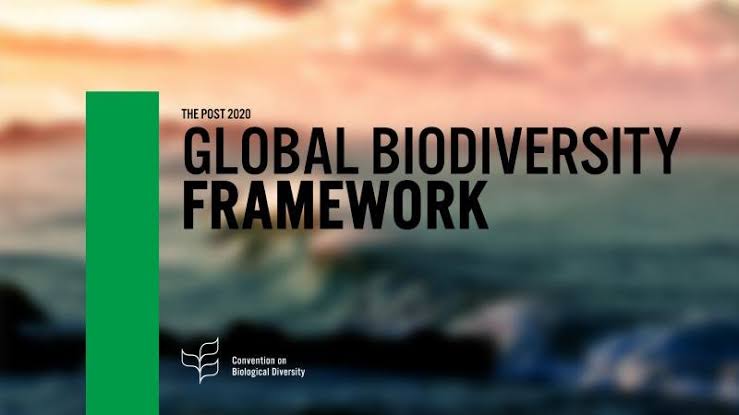By Dare Akogun
As the world heads towards negotiations on the post-2020 Global Biodiversity Framework, nature is still under-financed, the second edition of the State of Finance for Nature reveals.
The report comes a week before governments from across the world are set to gather for the UN Biodiversity Conference (COP 15) in Montreal, Canada, where they will adopt a landmark agreement to halt and reverse nature loss by 2030.
According to the report If the nations of the world is to limit global warming to below 1.5°C, halt biodiversity loss, achieve land degradation neutrality, and meet the Sustainable Development Goals, dramatic and urgent action is required on emissions reductions, the conservation of nature and sustainable consumption and production.
It says that Nature-based solutions (NbS) provide an opportunity to tackle a range of challenges in an integrated manner.
“Yet finance flows to NbS are currently only USD 154 billion/year, which is less than half of the USD 384 billion/year investment in NbS needed by 2025 and only a third of investment needed by 2030 (USD 484 billion/year),” it stated.
Among the key issues under discussion is the mobilization of resources for the implementation of the Post-2020 Global Biodiversity Framework and investments in NbS.
UNEP, along with partners, is urging governments to provide an agreement that sets a clear mandate for countries to require the financial sector to align its activities with nature positive goals.
“Tackling climate change, biodiversity loss and land degradation with immediate action requires that current global investments need to increase by USD 230 billion each year to 2025.
“Governments currently provide 83% of NbS finance flows, yet will be unlikely to dramatically increase these flows due to fiscal challenges linked to conflict, debt and poverty.
“Therefore, the private sector must significantly increase investment from current levels of USD 26 billion per year (17%).
“To do so, it must increase investments in sustainable supply chains, reduce activities with negative impact on climate and biodiversity and offset unavoidable impacts through high integrity nature markets, pay for the ecosystem services it uses and invest in nature positive activities,” it stated.
The analysis by the UN Environment Programme (UNEP) and the BMZ-financed Economics of Land Degradation (ELD) Initiative with support from Vivid Economics by McKinsey, finds that limiting global warming to 1.5°C, rather than 2°C.
It says this is achievable only if action is immediate and with additional cumulative investments of USD 1.5 trillion to a total of USD 11 trillion between 2022 – 2050, compared to the 2C target (with a total required cumulative investment of USD 9.5 trillion).
This additional investment according to the report will focus on sustainable agriculture and peatland restoration.
Phasing out coal and decarbonizing the energy systems will not be enough without adjacent massive investments into nature-based solutions. This is congruent with the findings of the 2022 Emissions Gap Report.
State Secretary in the Federal Ministry for Economic Cooperation and Development (BMZ), Jochen Flasbarth
said: “While the world is enduring multiple crises, this report provides clarity: It shows that, by significantly increasing public and private investments in nature-based solutions, it is possible to tackle climate change, biodiversity loss and land degradation – and at the same time harness many societal and economic benefits. We need to act now.”
This updated version of the report has broadened to marine ecosystems, concluding that a small share, 9%, of total investments in NbS target marine based solutions.
Disproportionally, the ocean represents over 70% of the Earth’s surface and absorbs around 25% of all CO2 emissions, making it one of the world’s largest carbon sinks while also providing 17% of the world’s protein.
Days of short termism are over: Greening all public incentives
As the IMF warns of the “darkest hour” in 2023 for global growth, this report is a reminder that lots of short-term efforts to boost Gross Domestic Product (GDP) by Governments, without paying attention to the fact that nature underpins many economies, will impose greater costs for both present and future generations in the years to come.
“Solutions to our societal challenges must focus on transitioning economic activity towards practices that address the key drivers of biodiversity loss, land degradation and the climate breakdown.
While the protection of 30% of the land and ocean by 2030 pledged by the G7 countries is important, for which the finance gap is estimated to be USD 17-22 billion per year by 2030, this report provides evidence that more finance needs to flow towards the restoration of natural vegetation and afforestation,” it stated.
The report also advocated that negative flows from public sources, which are 3 to 7 times larger than current investments in NbS, need to be repurposed along with placing the nature-positive imperative at the heart of economic policy, business, and investment decision-making.
Harmful subsidies are highest in the energy sector, estimated to range from USD 340 to 530 billion/year and in the agriculture sector, estimated at around USD 500 billion/year.
The science has never been clearer. At a time where climate change impacts are manifesting through unprecedented wildfires, droughts and floods, NbS help buffer these impacts and curb the cost of responding to these climate-induced disasters.
Nature is the soundest investment imperative to build economic resilience and human well-being. It’s a wake-up call to double down by doubling nature finance from now until 2025.


1 Comment